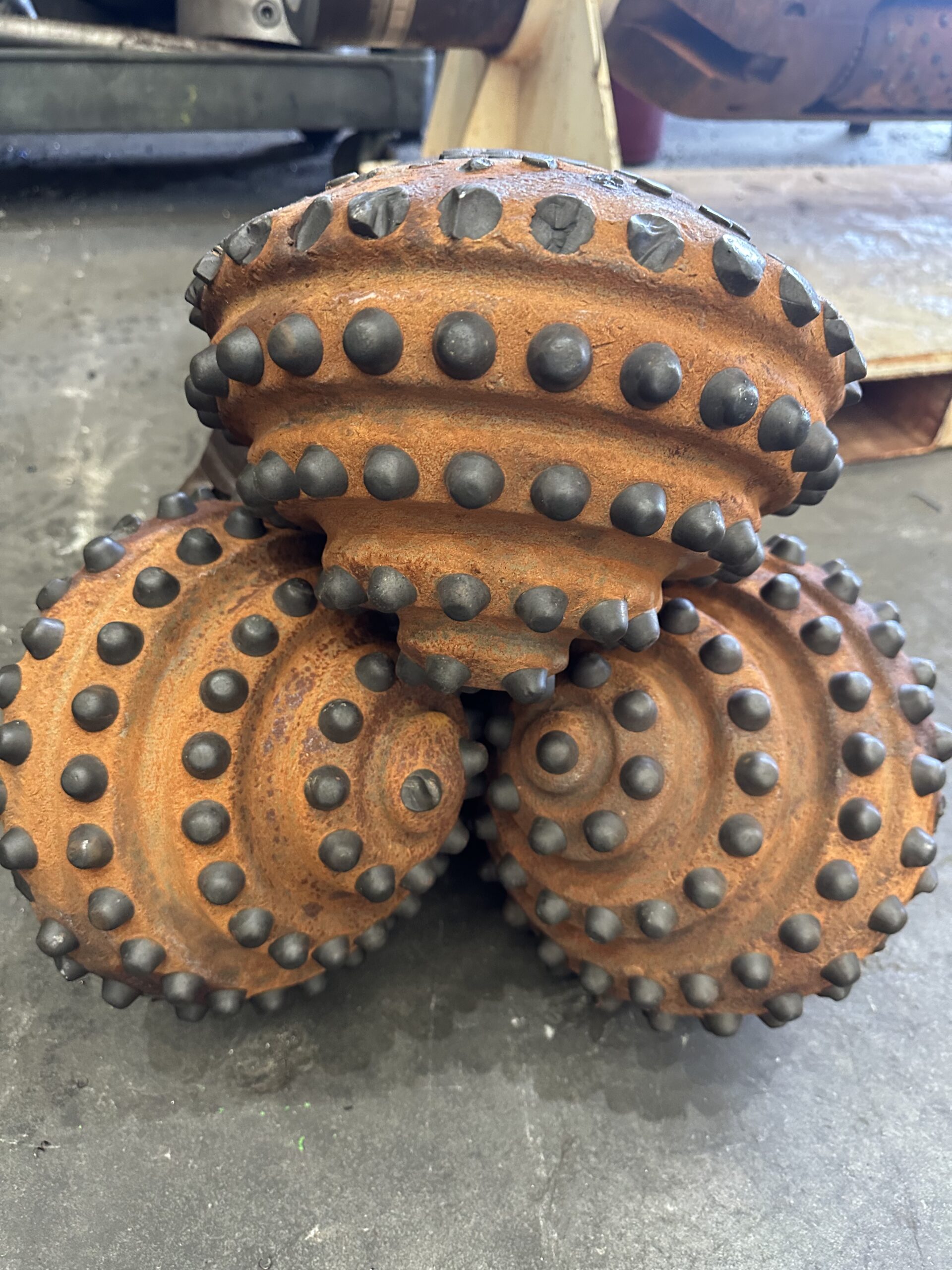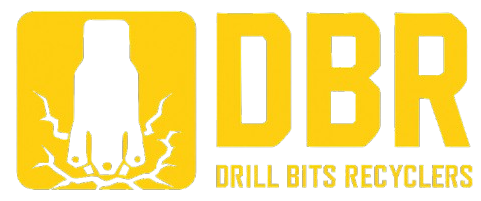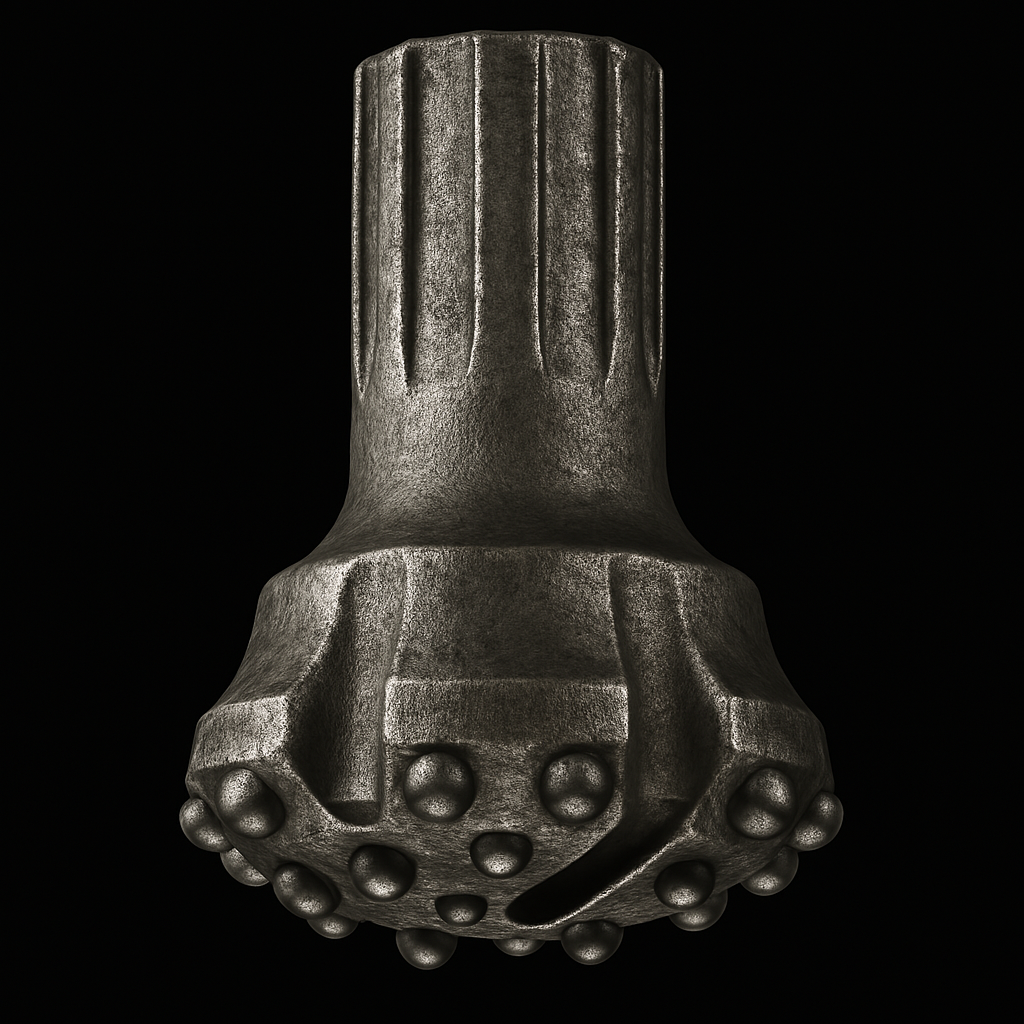Super Pit Scale: When Recycling Volumes Match Mining Ambitions
How massive operations create extraordinary recycling opportunities
Recycling on a Super Pit Scale
Kalgoorlie’s Super Pit isn’t just a spectacle of open-cut mining, it’s a symbol of industrial ambition. Stretching 3.5 kilometres long and plunging more than 600 metres deep, this massive gold mine moves hundreds of thousands of tonnes of rock every single day. But while most of the attention goes to the ore pulled from the ground, there’s another, less talked-about stream of value flowing through operations of this scale: scrap metal.
From drill bits chewed up by abrasive geology to high-wear tungsten tools and metal components on ageing equipment, the volume of recyclable material generated by large-scale mining is staggering. And where there’s scale, there’s opportunity, especially when it comes to recovering high-value metals like tungsten carbide, nickel alloys, and stainless steel.
This blog explores how mining operations like Kalgoorlie’s Super Pit are perfectly positioned to benefit from smarter scrap metal recovery. We’ll look at the materials that matter, the logistics of recycling at scale, and how the right partner can turn your scrap stream into a meaningful revenue source, all while supporting ESG goals and compliance requirements.
Mining big doesn’t just move mountains, it unlocks recycling potential on a scale few industries can match.
The Super Pit and Its Recycling Potential
A snapshot of Kalgoorlie’s Super Pit mining operations
Officially known as the Fimiston Open Pit, Kalgoorlie’s Super Pit is one of Australia’s largest and most iconic gold mines. Located in the Goldfields region of Western Australia, it has been in continuous operation for over 30 years, producing millions of ounces of gold and employing hundreds of workers across a vast, high-intensity site.
With around-the-clock activity, the site operates heavy-duty equipment under extreme wear conditions, from drills and loaders to crushers and haul trucks. Every machine, every drill run, and every shift produces not just ore, but a steady stream of scrap materials that are often overlooked as a source of value.
The volume of scrap generated by large-scale drilling
The scale of drilling at the Super Pit is unlike most other sites in the country. With dozens of rigs working simultaneously, each consuming drill bits, rods, and tungsten tools at a rapid rate, scrap metal builds up fast.
Typical high-volume scrap sources include:
- DTH and RC drill bits, worn or fractured during heavy use
- Tungsten carbide inserts, stripped or broken through rock impact
- Drill rods and casing, retired due to fatigue or deformation
- Hydraulic and structural steel parts, replaced during maintenance cycles
Multiply this across weeks and months of continuous drilling, and it’s easy to see how a mine like the Super Pit can generate tonnes of recyclable metal, much of it containing high-grade alloys with strong commercial value.
How the size of operations affects recycling strategy
Scale changes everything. For smaller operations, recycling might be an ad-hoc, reactive task. But at the Super Pit, it becomes a strategic opportunity.
- On-site storage management is critical, sorting and staging scrap for efficient bulk pickup.
- Transport logistics must accommodate remote access, tight schedules, and high payload volumes.
- Material testing and grading play a central role in unlocking top-tier pricing, especially for mixed alloy scrap like tungsten carbide and nickel-based metals.
Larger sites also benefit from working with specialist recycling partners who understand the operational tempo of mining and can coordinate collections, XRF testing, and custom reporting without slowing down production.
When managed properly, large-scale recycling becomes a low-effort, high-yield process, a rare win-win in mining logistics.
Key Materials with High Recycling Value
Drill bits and tungsten carbide recovery
In high-throughput sites like the Super Pit, drill bits aren’t just a consumable, they’re a hidden asset. Most DTH, RC, and HDD bits used in gold mining contain tungsten carbide, one of the hardest and most valuable materials in the metal recycling stream.
Because tungsten is both dense and wear-resistant, it’s ideal for penetrating the tough geology of the Eastern Goldfields. But once those bits reach end-of-life, they become a significant source of recoverable value.
Specialist recyclers like Drill Bits Recyclers are equipped to:
- Sort bit types and remove contamination
- Test for tungsten content using XRF analysis
- Recover and process worn inserts and bonded carbide segments
- Deliver accurate pricing based on real-time tungsten markets
For mining operators, that means faster turnaround, fairer returns, and full traceability, critical for compliance and ESG reporting.
Steel, copper, and nickel scrap from mining equipment
Beyond drill bits, large mining operations generate significant volumes of ferrous and non-ferrous scrap from equipment maintenance, replacement, and upgrades.
Key materials include:
- Stainless steel from hydraulic lines, tanks, and hard-wearing machine parts
- Nickel alloys and Inconel used in high-temperature or corrosive environments
- Copper wiring and components removed during electrical overhauls
- Structural steel from conveyors, frames, or redundant infrastructure
These metals can be recovered in bulk during planned shutdowns or asset retirements, offering a secondary revenue stream that offsets operational costs, especially when processed through a recycler experienced in high-value alloy sorting.
How mixed metals are sorted for maximum return
Mining scrap rarely arrives neatly packaged. Instead, recyclers deal with:
- Mixed alloy components (e.g. tungsten-steel assemblies)
- Contaminated parts (e.g. mud, grease, or wear coatings)
- Unidentified metals with unclear value
That’s where professional sorting and analysis matters. At DBR, each load is:
- Weighed on certified scales
- Analysed using handheld XRF scanners to identify alloys
- Separated by material type to avoid price dilution
- Logged and recorded for reporting and payout transparency
This precision ensures operators don’t leave money behind by under-identifying valuable metals. In large mining operations, even small percentage gains per load can equate to tens of thousands in recovered value over time.
Recycling Logistics for Large Mining Sites
Coordinating scrap collection across multiple mining zones
In large operations like Kalgoorlie’s Super Pit, scrap metal doesn’t accumulate in a single location. It’s spread across multiple pits, drill zones, workshops, and laydown areas, each with its own access and scheduling constraints. For operators across WA’s Goldfields, coordination is everything.
That’s where working with a WA-based specialist like Drill Bits Recyclers delivers real advantage. DBR understands the layout and flow of mining operations and provides tailored solutions that include:
- On-site bin placement for drill bits, tooling, and equipment scrap
- Pre-arranged pickups that align with shift changeovers and site schedules
- Assistance with segregation and storage to ensure clean input streams
- Field-ready logistics staff familiar with mine site protocols and access systems
The goal isn’t just collection, it’s integration with the way your site operates.
Transporting high-volume scrap from remote Kalgoorlie operations
Operating in Kalgoorlie means managing logistics at scale, across vast distances, under strict safety protocols, and in remote terrain.
DBR leverages a robust WA-wide freight network that includes:
- Heavy haul transport capable of moving high-volume tungsten and alloy scrap
- FIFO-aligned pickup scheduling, so scrap leaves when materials or personnel arrive
- Remote site access planning, covering everything from site inductions to traffic management
- Same-day coordination between multiple contractors, subcontractors, and facility managers
Whether your operation is on the Super Pit perimeter or in an outlying exploration zone, DBR ensures that if gear can get in, scrap can get out, safely and efficiently.
How recycling partners manage scale and turnaround times
Mining doesn’t stop, and neither should your recycling process. That’s why WA-based partners must move fast, operate reliably, and provide end-to-end transparency. DBR delivers this through:
- Pre-weighed, pre-sorted pickups to minimise delays
- Mobile XRF analysis at the point of collection or depot
- Digital reporting delivered within 24–48 hours for every job
- Scalable service for one-off clearances or ongoing contract work
By managing the full scrap lifecycle, from on-site collection to final payout, DBR helps WA mining companies recover value with minimal disruption to operations.

The Economic Impact of Recycling in Kalgoorlie
Revenue generated from scrap recycling vs. operational costs
In an industry driven by margins, every line item counts, and scrap metal recovery is no exception. For operators in Kalgoorlie, recycling worn-out tools, redundant equipment, and high-grade alloys can return tens of thousands of dollars per quarter, often from materials that would otherwise be discarded or stockpiled.
When you compare the revenue potential of scrap against the cost of simply disposing it:
- Tungsten carbide consistently commands premium rates, making it one of the highest-yield materials per kilo
- Nickel alloys and stainless steel offer reliable value, especially when sorted and tested
- Large-volume clear-outs during shutdowns can generate bulk payouts that offset labour or logistics expenses
For many Kalgoorlie-based sites, recycling has shifted from a ‘nice to have’ to a low-effort, high-return revenue stream that directly improves operational efficiency.
Case examples of mining companies leveraging recycling income
Mining companies across the Goldfields are already unlocking this value. Some recent examples include:
- A mid-tier gold producer near Kambalda who recovered over $40,000 in tungsten scrap during a planned drill rod replacement
- An exploration contractor working near Menzies who shipped mixed alloy scrap from multiple rigs, receiving a full payout within 72 hours of drop-off
- A shutdown event at the Super Pit that saw over 12 tonnes of scrap cleared, sorted, and exported, with custom ESG reporting provided to the corporate HSE team
In each case, the company gained both financial return and operational clarity, freeing up yard space, reducing handling risk, and supporting internal sustainability metrics.
Why tungsten recycling is particularly profitable
Tungsten stands out as a consistently high-value material, and Kalgoorlie’s geology demands a lot of it. Most drill bits used in the region’s hard rock formations feature tungsten carbide inserts that, once worn, still retain significant scrap value.
Why it pays off:
- Tungsten prices are linked to international commodity markets, often outperforming other metals
- Carbide scrap is dense and compact, meaning even small volumes yield strong returns
- Specialist recyclers can process and separate bonded bits and inserts with higher accuracy than general yards
- WA buyers like DBR offer transparent pricing and fast EFT turnaround, meaning your value isn’t held up in processing delays
Put simply, tungsten is the quiet achiever in the recycling economy, and Kalgoorlie is one of Australia’s biggest contributors.
Environmental and ESG Benefits
Reducing waste and landfill from large-scale mining operations
In regions like Kalgoorlie, where mining is a cornerstone of the economy, so is the environmental responsibility that comes with it. Every worn drill bit, bent rod, or scrapped component that’s recycled instead of discarded reduces the volume of industrial waste entering landfills or laydown yards.
For large operations such as the Super Pit, this isn’t a marginal gain, it’s a significant environmental offset. Through structured recycling programs, mining companies can:
- Divert tonnes of high-grade metal from landfill every year
- Reduce stockpiling of redundant equipment and scrap materials
- Minimise haulage of waste to disposal sites, reducing emissions
- Create cleaner, safer site environments by clearing clutter and redundant gear
When managed correctly, recycling becomes a key part of your site-wide waste reduction strategy, without compromising productivity or safety.
Circular economy initiatives in Western Australia’s mining sector
Western Australia is moving toward a more circular economy model, and scrap metal recycling plays a practical role in that transition. Materials like tungsten, stainless steel, and nickel alloys can be recovered, refined, and reused, keeping valuable resources in play rather than letting them degrade or be shipped offshore as waste.
Some examples of WA mining circularity in action:
- Recycling tungsten scrap into new drill tooling or carbide products
- Repurposing stainless steel and nickel alloys into new components, pipework, or industrial fabrications
- Supporting local metal processing industries that depend on clean input streams
By contributing to the circular economy, mining operators strengthen resource resilience and demonstrate real-world commitment to sustainable development.
How ESG reporting is boosted by recycling programs
Environmental, Social, and Governance (ESG) frameworks are now central to how mining companies are evaluated, by investors, regulators, and communities alike. And while emissions and land disturbance are often front of mind, scrap metal recycling is an easy ESG win that often goes unreported.
At Drill Bits Recyclers, we support clients across WA with:
- Custom ESG reporting covering materials, weights, values, and dates
- Traceability logs that align with audit-ready documentation requirements
- Data breakdowns by site, project, or equipment type
- Visual dashboards for internal stakeholder reporting or external disclosure
When integrated into broader ESG reporting, recycling demonstrates measurable action, not just ambition, helping your company lead the narrative on responsible resource use.
What Mining Companies Can Do to Maximise Scrap Value
Partnering with specialist recycling companies
Not all scrap yards are created equal, especially when it comes to high-value metals like tungsten carbide, Inconel, or nickel alloys. For mining operators across Kalgoorlie and the broader Goldfields, working with a specialist recycling partner makes the difference between fair value and missed opportunity.
What a specialist like Drill Bits Recyclers offers:
- Industry knowledge of drilling and mining operations
- On-site assessments to identify hidden value in worn tooling
- Precise alloy testing using XRF technology
- Faster, higher-value payouts based on accurate grading
- Custom ESG and traceability reporting that supports compliance
With a trusted partner, scrap recovery becomes strategic, not reactive.
Scheduling bulk scrap collections for maximum efficiency
Timing matters. Instead of ad-hoc pickups, mining operations can maximise returns by aligning scrap collection with:
- Shutdowns or maintenance cycles, when gear is being swapped out
- Drill bit changeouts, ideal for collecting tungsten and carbide inserts
- End-of-project demobilisation, when tools, rods, and spares are decommissioned
Bulk collections reduce handling time, cut transport costs, and create larger single loads that command better pricing. At DBR, we work with site planners and warehouse managers to schedule pickups that slot into existing workflows, without disrupting production.
Testing and grading materials for higher payouts
One of the most common ways operators lose value is through misidentification of metals. Tungsten tools mixed with mild steel. Stainless scrap bundled with contaminated parts. Without proper sorting and testing, you’re leaving money behind.
To fix that:
- Use XRF testing to verify alloy content before selling
- Sort materials by type and condition (e.g. clean vs bonded carbide)
- Label bins clearly to prevent cross-contamination on site
- Ask your recycler for breakdowns by weight and material, not lump-sum pricing
At DBR, we handle the testing and grading as part of every job, but when operators start sorting at the source, the payout gets even better.
Conclusion: Mining Big, Recycling Bigger
In a place like Kalgoorlie, where mining operations stretch across kilometres and move mountains daily, scale isn’t just a feature, it’s the foundation. That same scale creates extraordinary recycling opportunities, especially when high-value materials like tungsten carbide, stainless steel, and nickel alloys are involved.
The Super Pit and surrounding Goldfields projects generate massive volumes of recyclable scrap, from worn drill bits to decommissioned equipment. But without the right partner and process, much of that value risks going unrealised.
At Drill Bits Recyclers, we help WA mining companies turn scrap into strategy:
- Streamlining collection across remote and high-output sites
- Maximising returns through precise testing and material sorting
- Supporting ESG and compliance through tailored reporting
- Handling logistics so your operations stay focused on production, not scrap
If your site is generating metal waste, it’s likely generating untapped value. The question isn’t if you should recycle, it’s how much more you could be recovering.
Discover how our scrap recycling services unlock value for WA’s largest mining sites.
Contact Drill Bits Recyclers today for an expert consultation and fast, transparent service.

